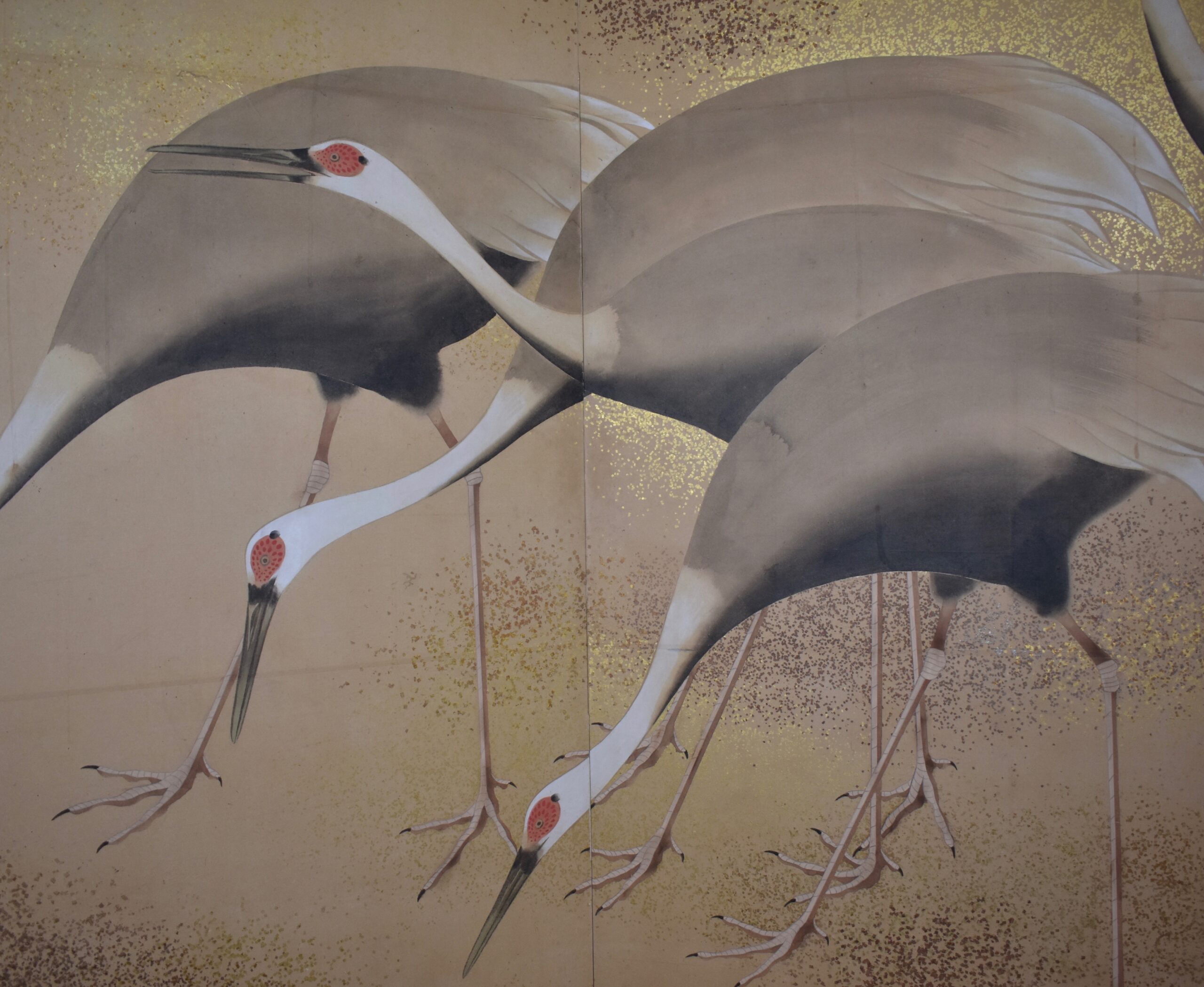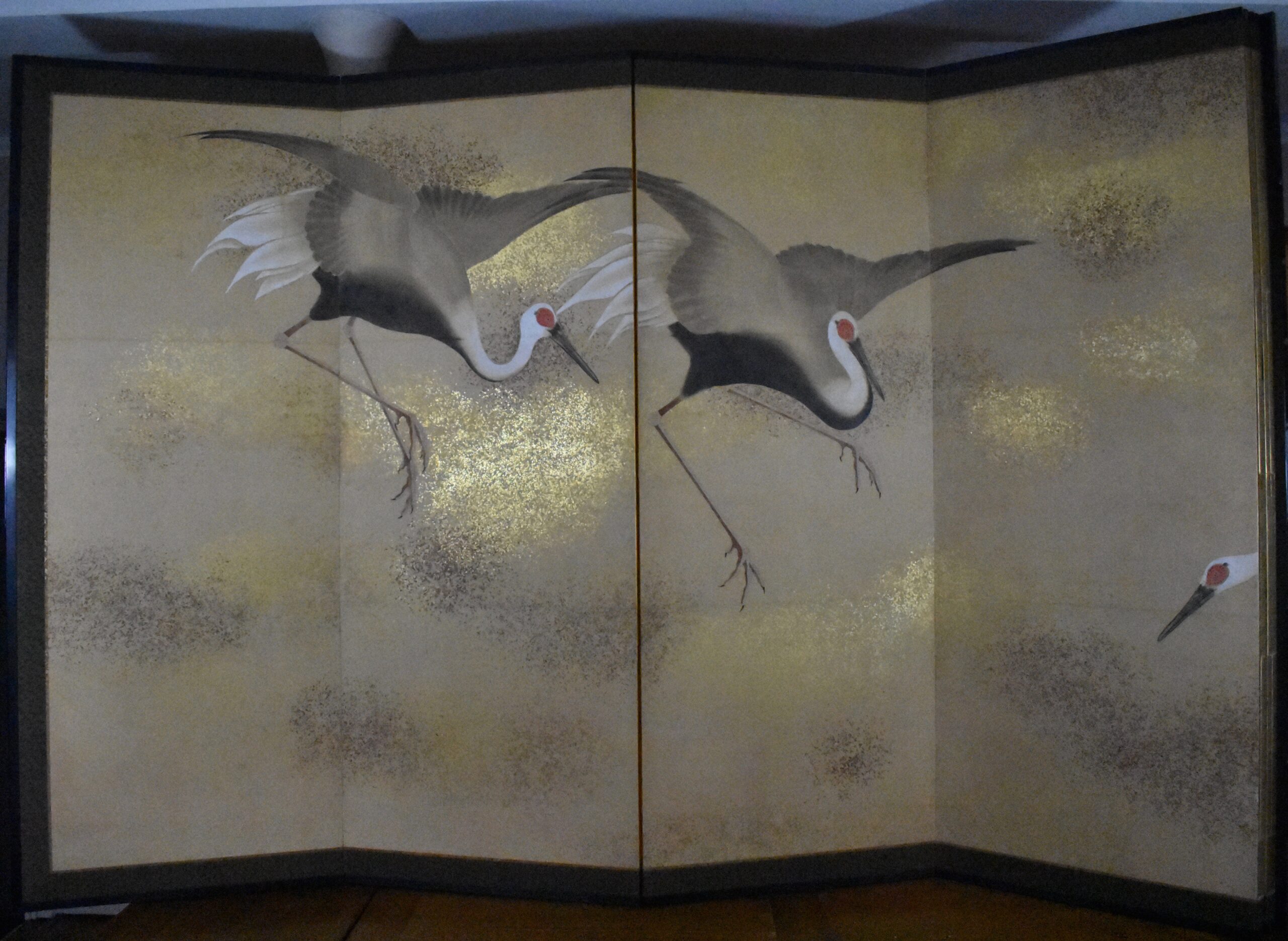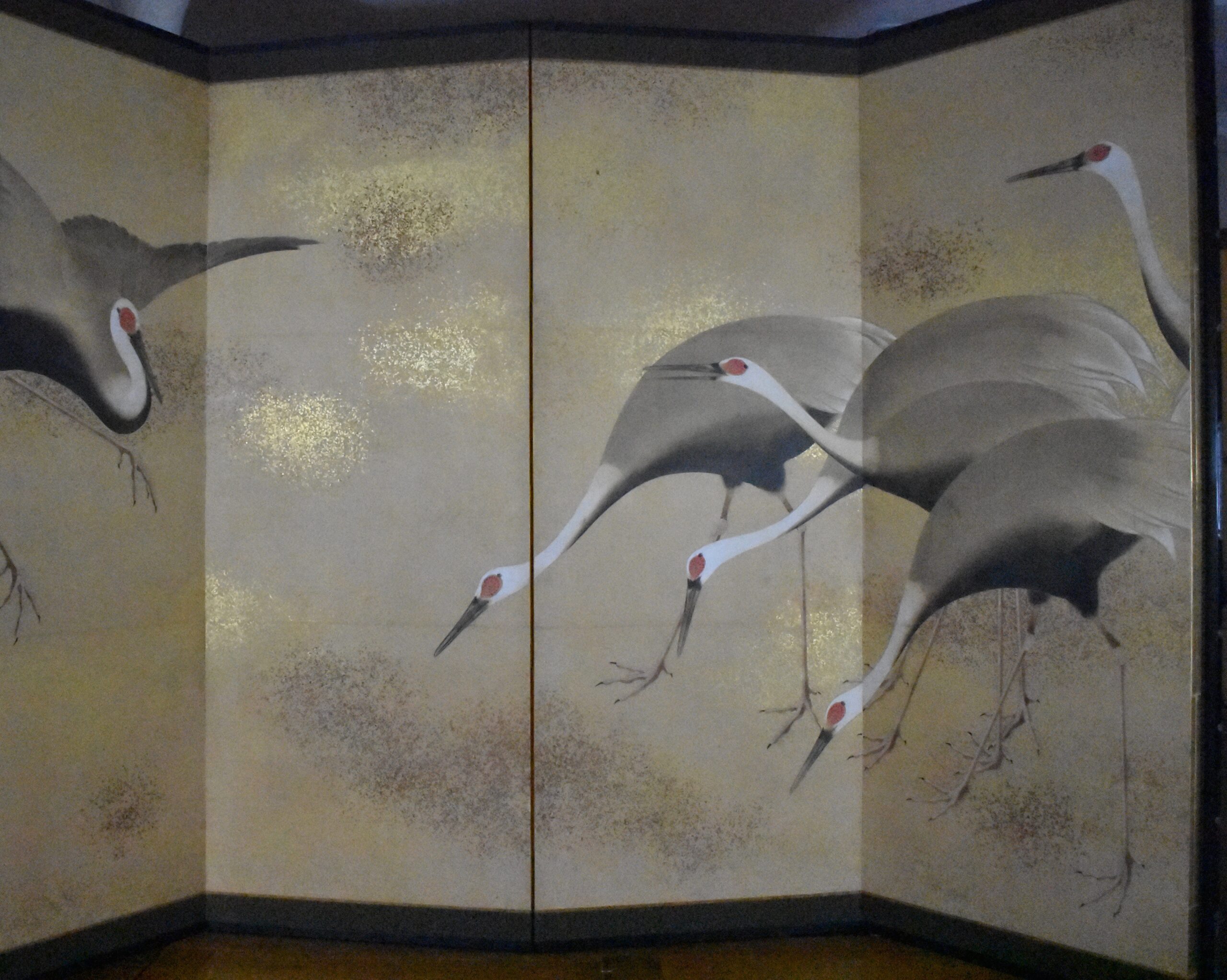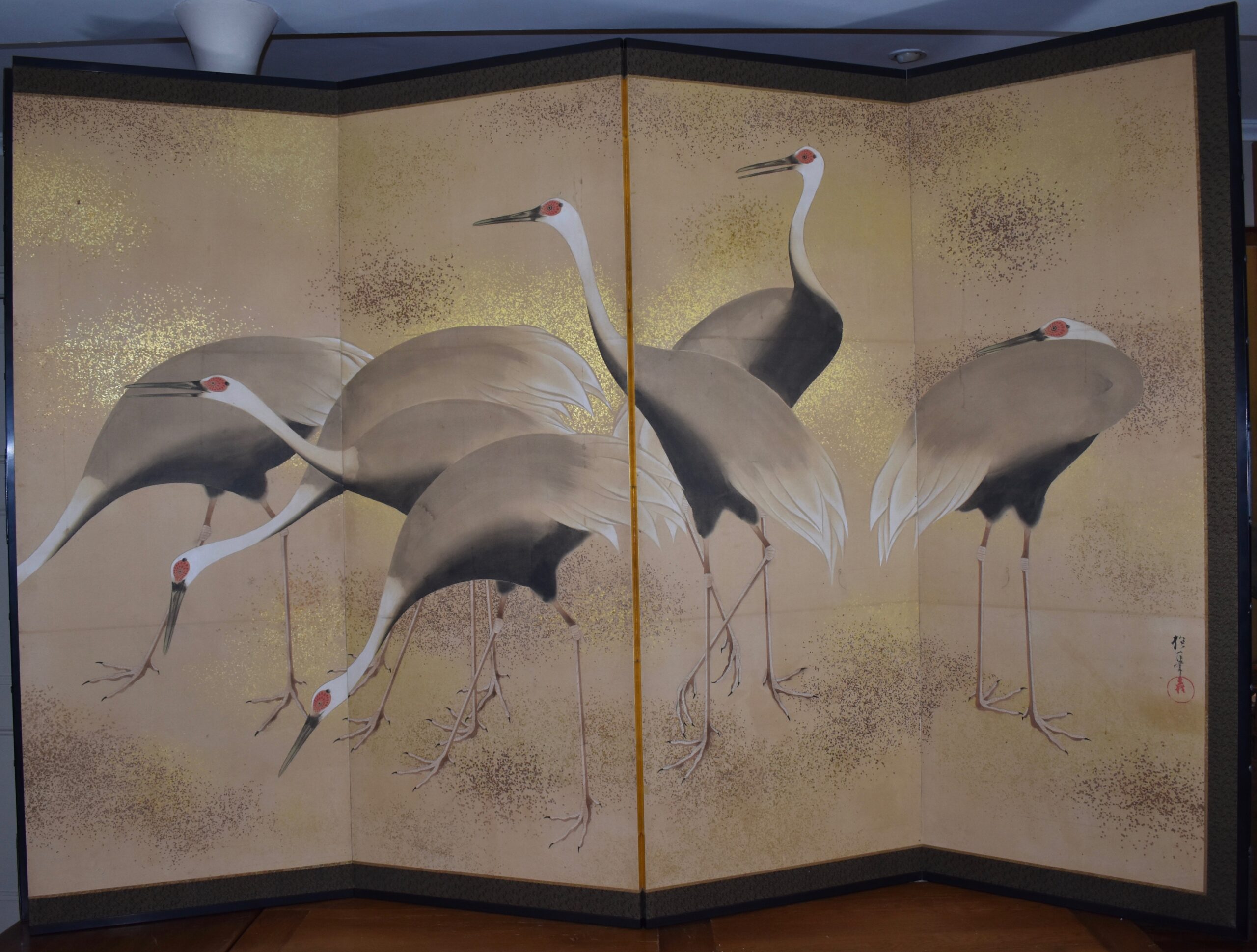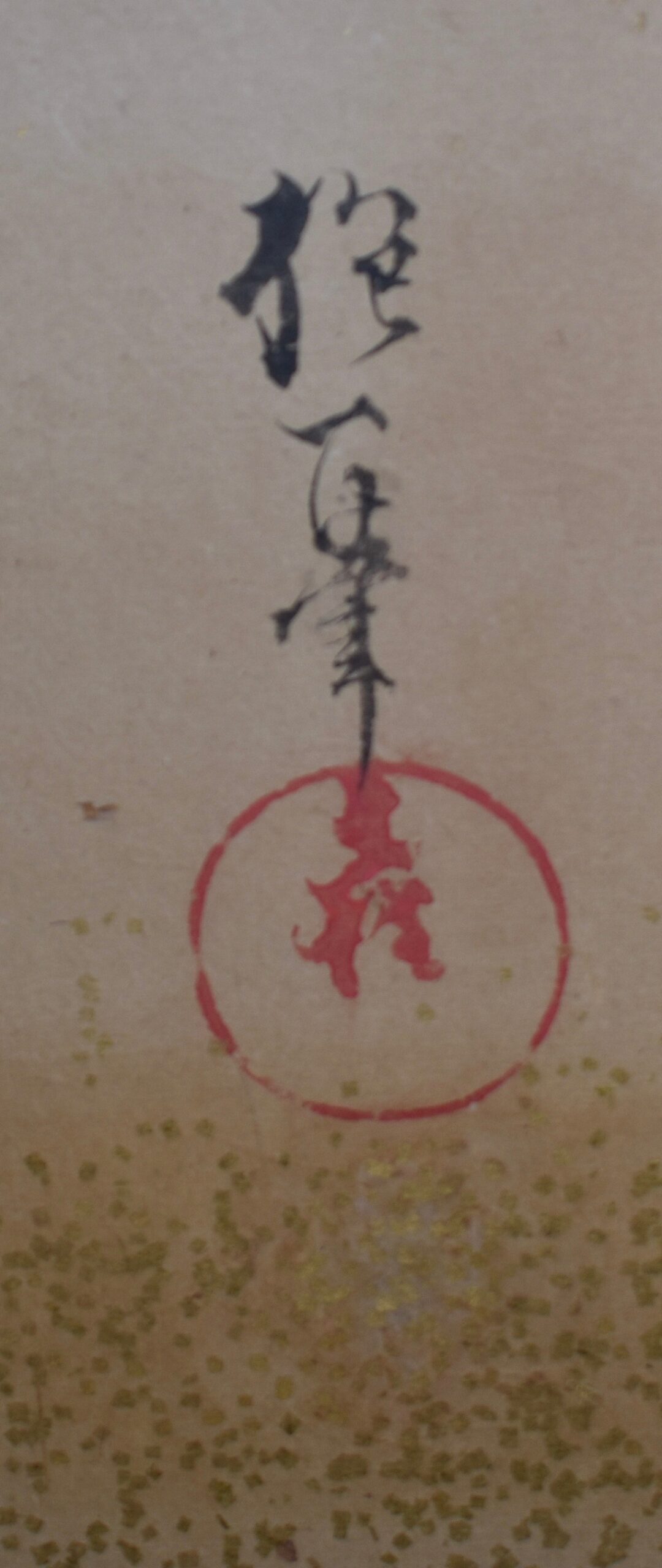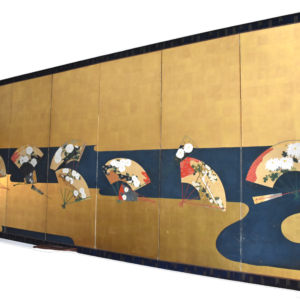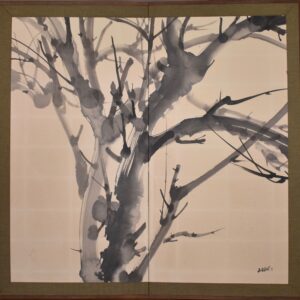Eight-Panel Folding Screen of the White-Naped Cranes, the symbol of luck, longevity and fidelity. Seven cranes in search of food are joined by two more. Three birds have raised their heads and watch the landing companions with interest along with one whose back is turned on them also turning its head to look round.
Cranes are known for forming couples which subsequently incubate the eggs and guard the younglings together, but mating is undertaken in large groups. They also gather into large flocks to fly to distant areas in picturesque V formations.
In this excellent example of a Rimpa school painting, the artist strikes a harmonious balance between realism and decorative quality. He shows the cranes in motion, moving with tremendous grace.
At the same time, the gold sprinkled on the background into shapes resembling small clouds makes the scene look unreal, taking the birds into an ideal space, undistracted – admires their beauty and picturesque dance.
The seven cranes on the ground are captured in different poses but their wings resting on their side endow them with a static quality. And then the spread wings, bent legs and necks of the two birds flying in from the left add dynamism to the composition.
As is the case with numerous Japanese works of art, harmony is attained here despite the asymmetry. The signature points to Hoitsu (1761-1828), a Rimpa master who skilfully combined various stylistic elements.
Before he chose the Rimpa school, he had apprenticed with a number of workshops of the Kano and Maruyama schools, and also with Utagawa Toyoharu, an ukiyo-e artist, and So Shiseki of the Nanga school.
His work made the Rimpa school’s style more vivid in the late 18th and early 19th centuries, attracting many new students. They soon joined the movement aiming to revive traditional Japanese art.
